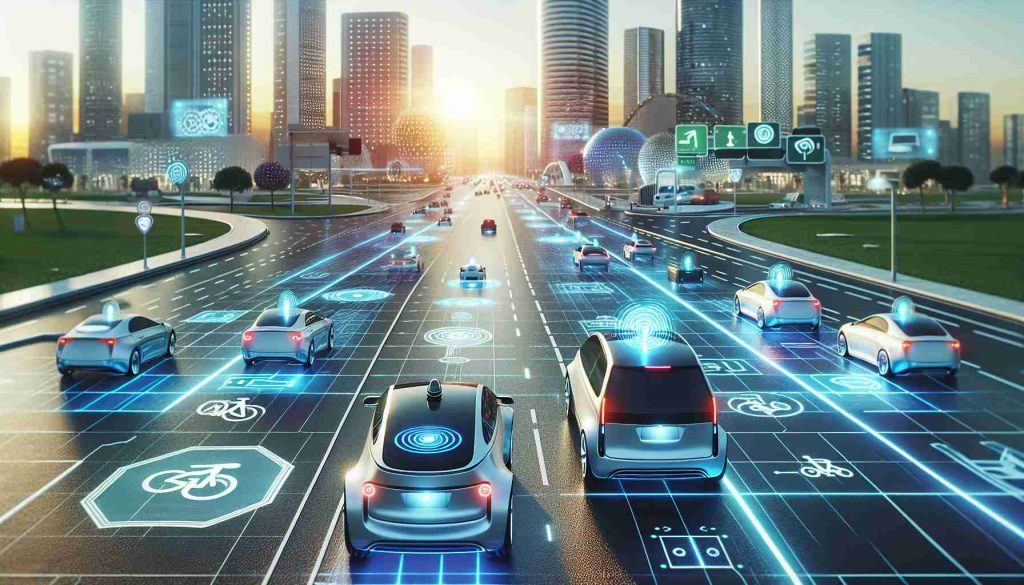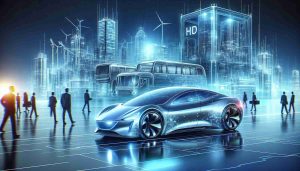Revolutionizing Travel: The Future of Driverless Cars is Here! Are You Ready?

Overview of the Autonomous Driverless Cars Market
The Autonomous Driverless Cars Market is set to experience unprecedented growth, beginning with a valuation of USD 22.7 billion in 2023 and projected to soar to nearly USD 104 billion by 2030, reflecting an astonishing CAGR of 42.74%.
This rapid expansion is largely fueled by significant advancements in artificial intelligence, machine learning, and innovative sensor technologies such as LiDAR and GPS. These state-of-the-art vehicles promise to transform the transportation landscape by minimizing accidents, thereby enhancing safety and operational efficiency. With growing regulatory backing and incentives from governments, adoption rates are steadily increasing.
Major automotive players, including Tesla, Toyota, and General Motors, are heavily investing in cutting-edge autonomous technologies. Collaborative ventures between automakers and technology firms, such as partnerships between Toyota and Pony.ai, are accelerating innovations. The market is also focusing on integrating autonomous vehicles with ride-sharing services to enhance cost efficiency and reach.
Looking ahead, the spotlight is on Level 3 automation, ensuring a harmonious balance between complete automation and necessary human oversight. As the industry continues to evolve, significant safety enhancements will be at the forefront, combating road accidents and introducing Advanced Driver Assistance Systems (ADAS).
With ongoing investments in research and development, the future of the autonomous driving market promises to reshape how we perceive and utilize transportation.
Wider Implications of Autonomous Driverless Cars
The rapid ascent of the autonomous driverless car market is poised to reverberate through various facets of society and the global economy. As these vehicles become mainstream, they promise to transform urban landscapes, potentially reducing the need for expansive parking spaces and, in turn, reshaping real estate demand. In cities where traffic congestion is rampant, adopting autonomous vehicles could lead to a 30% reduction in vehicle ownership, according to some analysts, redefining urban mobility and public transportation systems.
Socially, the incorporation of autonomous cars could bridge accessibility gaps. Disabled and elderly individuals, often reliant on external assistance, may find newfound freedom, fostering greater independence and participation in society. However, this transition brings forth concerns regarding job displacement, particularly for professional drivers in logistics and transportation. The implications on labor markets will require thoughtful policymaking to ensure a transition that mitigates unemployment and facilitates re-skilling.
Moreover, the environmental repercussions of widespread autonomous vehicle adoption merit consideration. With the potential to optimize travel routes and reduce congestion, autonomous vehicles could lower carbon emissions. Studies suggest that if 20% of cars on the road were autonomous, greenhouse gas emissions could decrease by up to 45% in metropolitan areas. Yet, this optimistic scenario hinges on the shift towards sustainable energy sources for charging these vehicles.
As we monitor the convergence of technology and mobility, key trends like increased data privacy concerns and infrastructure upgrades will emerge, heralding a new era of transportation that emphasizes safety, efficiency, and inclusivity. Thus, the shift towards automation signals not just a technological revolution but a fundamental reevaluation of our relationship with mobility and urban living.
Unlocking the Future: The Booming Autonomous Driverless Cars Market
Overview of the Autonomous Driverless Cars Market
The Autonomous Driverless Cars Market is on the cusp of a remarkable transformation, projected to grow from a valuation of USD 22.7 billion in 2023 to nearly USD 104 billion by 2030, marking an extraordinary CAGR of 42.74%. This explosive growth is fueled by groundbreaking advancements in artificial intelligence, machine learning, and innovative technologies such as LiDAR and GPS.
Technological Innovations Driving Growth
The integration of advanced technologies forms the backbone of the autonomous vehicle sector. Innovations in AI and machine learning enable vehicles to learn from vast amounts of data, improving their decision-making capabilities. Sensor technology like LiDAR provides high-resolution data about the vehicle’s surroundings, significantly enhancing safety and performance. According to market research, this dependence on cutting-edge technology will continue to evolve, attracting new players into the autonomous driving landscape.
Major Players and Collaborations
Leading automotive giants such as Tesla, Toyota, and General Motors are investing heavily in autonomous vehicle technology. Partnerships are becoming increasingly crucial; for example, Toyota’s collaboration with Pony.ai is designed to spur innovation. Such collaborations allow for shared expertise and resources, driving the development of more sophisticated autonomous systems.
Integration with Ride-Sharing Services
The autonomous vehicle market is closely tied to the ride-sharing industry. Companies are exploring how to integrate autonomous vehicles within existing rideshare platforms to enhance cost efficiency and improve user experience. This synergy could redefine urban transportation, making it more accessible and reducing the need for personal vehicle ownership.
Level 3 Automation: The Future of Safe Driving
The industry is currently focused on achieving Level 3 automation, where vehicles can handle driving with minimal human intervention while still requiring driver oversight in certain situations. This approach promises a safer transition into fully autonomous systems, enhancing consumer trust and acceptance.
Advanced Driver Assistance Systems (ADAS)
Continuous enhancements in safety technologies like Advanced Driver Assistance Systems (ADAS) are integral to the future of autonomous driving. These systems include features like automated braking, lane-keeping assistance, and adaptive cruise control, significantly reducing the likelihood of accidents and improving overall road safety.
Market Insights and Trends
Ongoing investments in research and development signify a robust future for the autonomous driving market. Insights indicate that consumer acceptance and regulatory support will be vital for market adoption. Safety features, affordability, and convenience will drive consumer decision-making. The trend toward sustainability also plays a role, as electric and hybrid autonomous vehicles gain popularity.
Security Aspects and Challenges
As with any technological advancement, security remains a significant concern. Ensuring the safety of autonomous vehicles from cyber threats is essential. Manufacturers are investing in robust cybersecurity measures to protect both driver and passenger safety, as well as the integrity of vehicle operations.
Summary and Future Predictions
In conclusion, the autonomous driverless car market is poised for substantial growth, driven by technological innovations, major investments from key players, and strategic partnerships. As the industry moves toward Level 3 automation and enhances safety through ADAS, we can expect a transformative impact on transportation in the coming years. The shift towards sustainable and efficient transportation solutions will drive continuous improvements within this exciting market.
For more information about the evolving automotive landscape, visit automotive.com.



